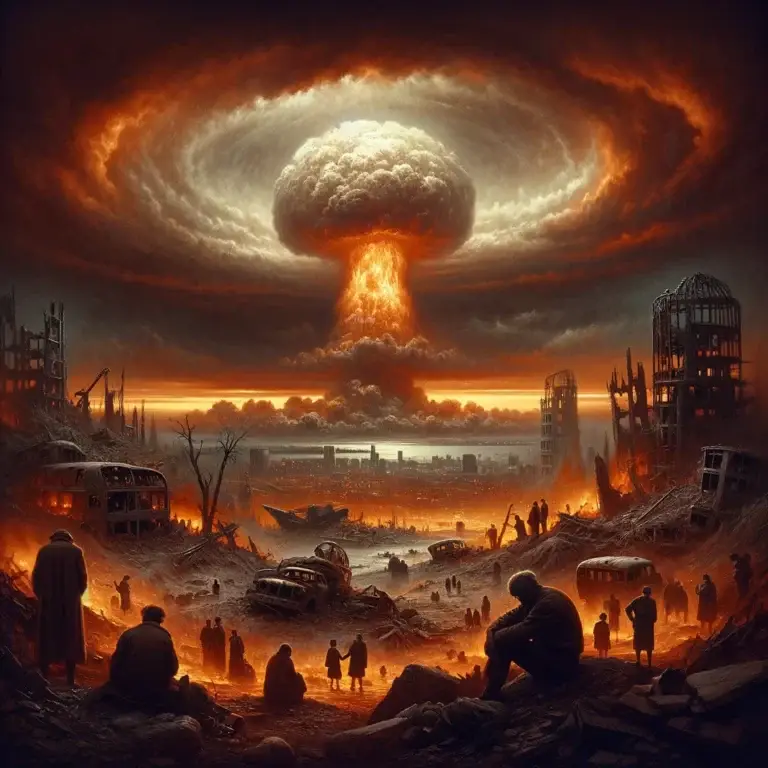Atomic Bomb
Table of Contents
What is an Atomic Bomb?

The atomic bomb refers to a devastating weapon that derives its destructive power from nuclear reactions, specifically the fission of uranium-235 or plutonium-239 atoms. Developed during World War II, the atomic bomb was first used in warfare by the United States against Japan in August 1945.
The bombings of Hiroshima and Nagasaki resulted in unprecedented destruction and loss of life, leading to Japan’s surrender and the end of World War II. The atomic bomb ushered in the nuclear age. It raised profound ethical and geopolitical questions regarding the use and proliferation of nuclear weapons, shaping global security dynamics during the Cold War and beyond.
Atomic Bomb History
The atomic bomb is a powerful explosive device that derives its destructive force from nuclear reactions, specifically fission (splitting of atomic nuclei) or fusion (combining atomic nuclei).
The first atomic bomb was developed during World War II as part of the top-secret Manhattan Project, led by the United States, the United Kingdom, and Canada. It was intended to give the Allies a decisive advantage over Nazi Germany.
On July 16, 1945, the first atomic bomb test, codenamed “Trinity,” was conducted in Alamogordo, New Mexico. The successful test confirmed the viability of atomic weapons.
On August 6, 1945, the United States dropped an atomic bomb nicknamed “Little Boy” on the Japanese city of Hiroshima. The explosion resulted in massive destruction and loss of life, instantly killing an estimated 70,000 people and causing long-term health effects for survivors.
Three days later, on August 9, 1945, a second atomic bomb nicknamed “Fat Man” was dropped on the city of Nagasaki, Japan. The bombing resulted in similar devastation, killing an estimated 40,000 people immediately.
The bombings of Hiroshima and Nagasaki led to Japan’s unconditional surrender on August 15, 1945, effectively ending World War II.
The decision to use atomic bombs on Japan remains highly controversial, with proponents arguing that it hastened the end of the war and saved lives by avoiding a costly invasion of Japan. Critics contend that the bombings were unnecessary and constituted acts of indiscriminate mass killing.
The use of atomic bombs in Hiroshima and Nagasaki ushered in the nuclear age. It sparked fears of nuclear proliferation and the possibility of nuclear war during the Cold War era.
The development and testing of atomic bombs continued after World War II, with the United States, the Soviet Union, the United Kingdom, France, China, and eventually other countries acquiring nuclear weapons capabilities.
Efforts to control the spread of nuclear weapons culminated in the Treaty on the Non-Proliferation of Nuclear Weapons (NPT) in 1968, which aimed to prevent the spread of nuclear weapons and promote disarmament. However, concerns about nuclear proliferation persist, particularly in regions of geopolitical tension.
Related Links
Manhattan Project
Neutrons
World War II
The Cold War